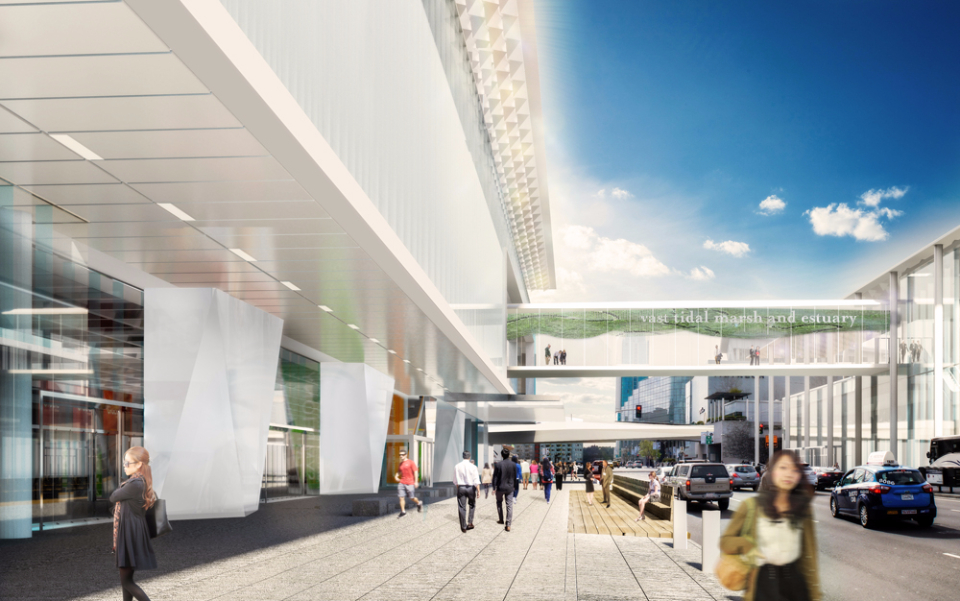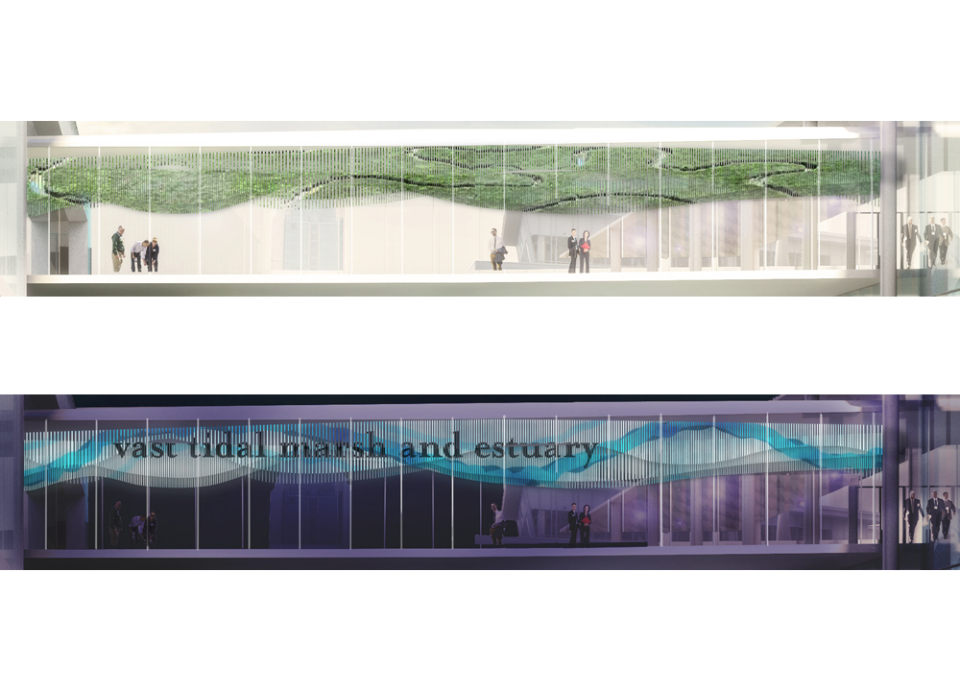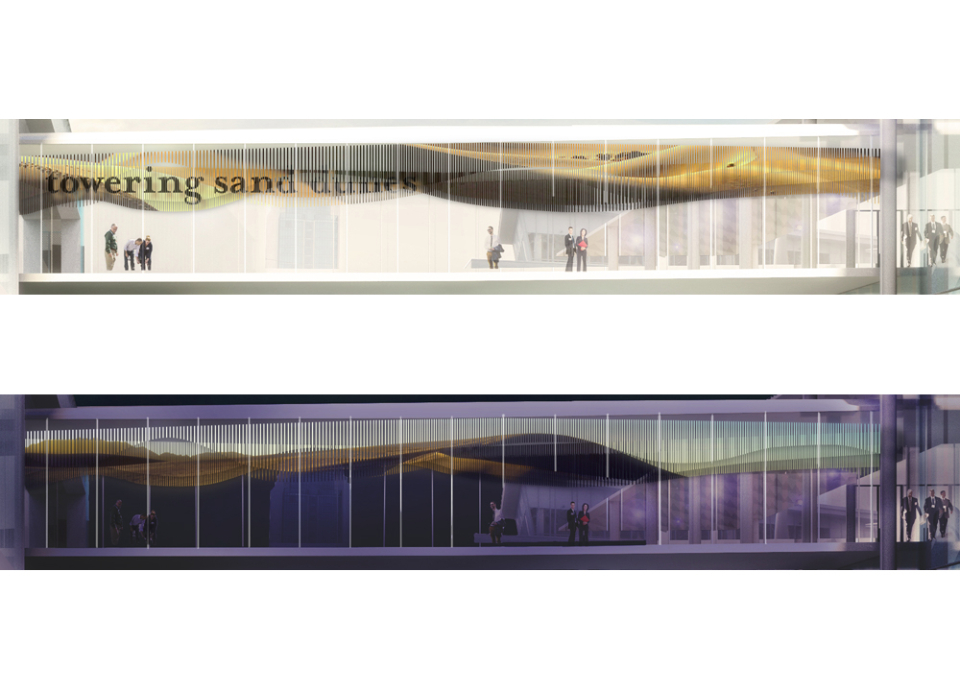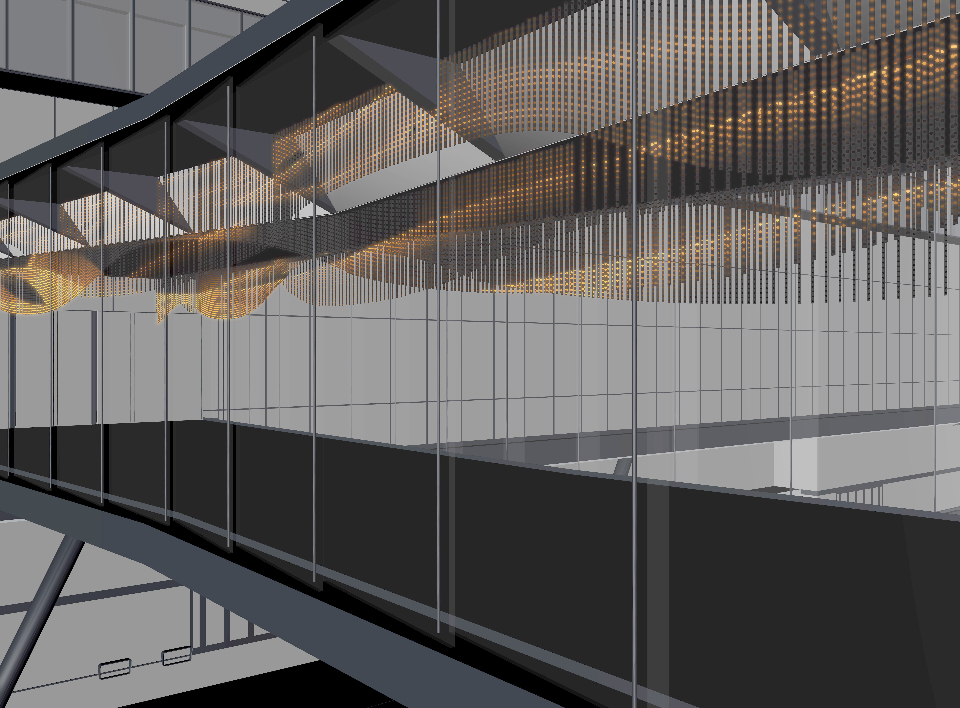Utterback’s proposal, Rise and Fall, was one of three finalists presented for the Moscone Expansion Project in San Francisco. The proposed piece consists of four LED curtains spanning the length of the Moscone pedestrian bridge displaying animations revealing marsh and dune ecosystems that once inhabited the area.
San Francisco south and west of the Moscone project site was once a vast marsh of tidal streams and estuaries that drained into Mission Bay. The coastal salt marsh was filled with California cordgrass, pickleweed, salt grass, ducks and other waterfowl. To the north, the site was bounded by towering sand dunes 80 feet tall. Valleys in the dunes were home to oaks, willows, and deer.
After gold was discovered in 1849 thousands of miners pitched tents in sand dune valley camps known as “Happy Valley” and “Pleasant Valley” between the present Market and Howard streets. By the 1860s the dunes had been completely leveled and dumped into the marsh and bay. The entire sand dune and salt marsh ecosystem was destroyed in our rush for wealth and a prosperous future.
Rise and Fall is an advertisement for the past that we destroyed in this rush to the future, and a subtle reminder that our current product and market cycles are part of ongoing cycles of booms and busts inherent in San Francisco’s history.
Rise and Fall consists of four LED curtains hung across the length of the Moscone pedestrian bridge. Each curtain is composed of LED nodes on strands. Two of the curtains face east and two face west to create two double-layered translucent “screens.” These unconventional display surfaces engage the architecture of the bridge, and maintain visibility through it. Due to the undulating lengths and varying densities of LEDs, imagery on each curtain will appear and disappear from view as pedestrians approach the bridge and change their physical viewpoint.
Dynamically generated animations of the salt marsh and dune ecosystem, as well as imagery referencing human developments such as gold rush tents and steam boilers, will drift in and out of focus across the screens in a quiet testament to the vanished landscape. The animations include simple phrases, evocative of advertising slogans, which describe the landscape and the various human engagements with it. The shimmering double LED curtain, and the gaps created by its sculptural form, convey a sense of transience and lapsing memory. Rise and Fall brings the past into conversation with the present to create a deeper sense of place, but it also hints at the impossibility of regaining what we have lost.










